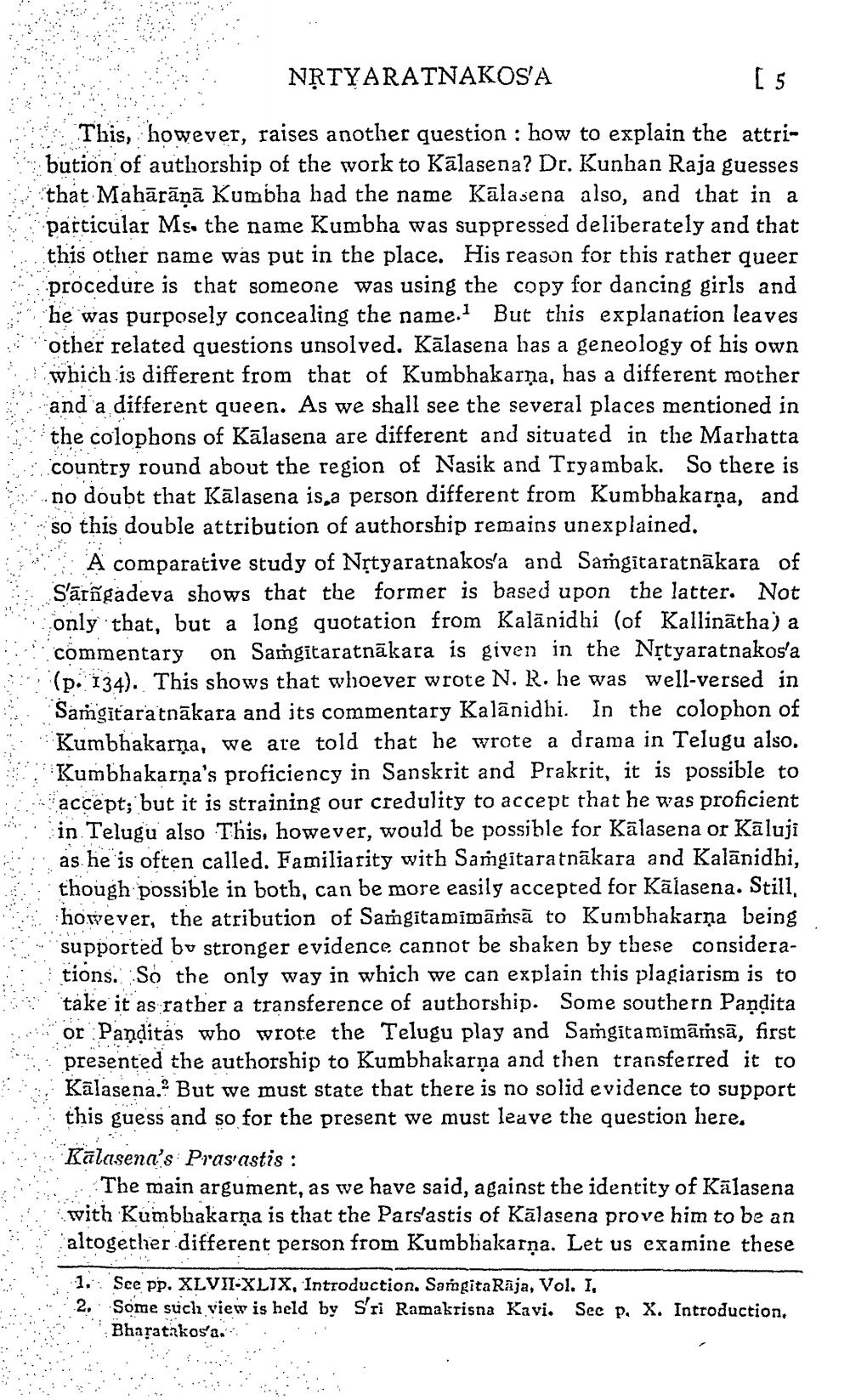________________
NRTYARATNAKOSA
[5
This, however, raises another question : how to explain the attribution of authorship of the work to Kālasena? Dr. Kunhan Raja guesses that Mahārāṇā Kumbha had the name Kālasena also, and that in a particular Ms. the name Kumbha was suppressed deliberately and that this other name was put in the place. His reason for this rather queer
procedure is that someone was using the copy for dancing girls and "he was purposely concealing the name. But this explanation leaves
other related questions unsolved. Kālasena has a geneology of his own which is different from that of Kumbhakarņa, has a different mother and a different queen. As we shall see the several places mentioned in the colophons of Kālasena are different and situated in the Marhatta country round about the region of Nasik and Tryambak. So there is no doubt that Kālasena is a person different from Kumbhakarna, and so this double attribution of authorship remains unexplained.
A comparative study of Nịtyaratnakosa and Samgitaratnākara of Sārñgadeva shows that the former is based upon the latter. Not only that, but a long quotation from Kalānidhi (of Kallinātha) a commentary on Samgitaratnākara is given in the Nộtyaratnakosa (p. 134). This shows that whoever wrote N. R. he was well-versed in Samgitaratnākara and its commentary Kalānidhi. In the colophon of Kumbhakarna, we are told that he wrote a drama in Telugu also. Kumbhakarņa's proficiency in Sanskrit and Prakrit, it is possible to accept; but it is straining our credulity to accept that he was proficient in Telugu also This, however, would be possible for Kālasena or Kāluji as he is often called. Familiarity with Samgitaratnākara and Kalānidhi, though possible in both, can be more easily accepted for Kālasena. Still, however, the atribution of Samgitamīmāṁsā to Kumbhakarņa being supported by stronger evidence cannot be shaken by these considerations. So the only way in which we can explain this plagiarism is to take it as rather a transference of authorship. Some southern Pandita or Panditás who wrote the Telugu play and Samgitamimāṁsā, first presented the authorship to Kumbhakarna and then transferred it to Kālasena. But we must state that there is no solid evidence to support this guess and so for the present we must leave the question here. Kālasena's Pras'astis :
The main argument, as we have said, against the identity of Kālasena with Kumbhakarna is that the Pars'astis of Kālasena prove him to be an altogether different person from Kumbhakarņa. Let us examine these
P
1. See pp. XLVII-XLIX, Introduction. Sangita Raja, Vol. I, 2. Some such view is held by Sri Ramakrisna Kavi. See p. X. Introduction.
Bharatakos'a.




